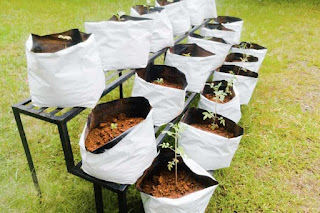Top 7 Herbicides that Indian Farmers Widely use
Indian farmers use a variety of herbicides to control weeds in their crops. The use of herbicides in India has increased in recent years due to the growing demand for food and the need to control weeds that compete with crops for water, nutrients, and sunlight. However, the use of herbicides can also have negative environmental impacts, such as water pollution and soil erosion. It is crucial for farmers to use herbicides carefully and to follow the label directions to minimize the risk of environmental damage. Some of the most common herbicides used in India include:
Glyphosate: Glyphosate herbicide is a non-selective herbicide that kills all plants it comes into contact with. It is the active ingredient in the popular weed killer roundup. It is used to control a wide variety of weeds, including annual grasses, broadleaf weeds, and woody plants. Glyphosate works by interfering with the plant's ability to make essential amino acids.
Atrazine: Atrazine is a selective herbicide that kills broadleaf weeds but not grasses. It is used to control weeds in corn, sorghum, and sugarcane.
Dicamba: Dicamba is a selective herbicide that kills broadleaf weeds but not grasses. It is used to control weeds in soybeans, cotton, and peanuts.
Imazapyr: Imazapyr is a selective herbicide that kills broadleaf weeds and grasses. It is used to control weeds in various crops, including corn, soybeans, and wheat.
Treflan: One of the first DNA herbicides to be sold commercially was Treflan. For many years, it was the main soybean product, and it inspired the commercial creation of various other DNA herbicides, like Tolban, Cobex, etc.
Sempra Herbicide: This herbicide was brought to India for the purpose of controlling Cyperus rotundus. It is a WDG (Water dispersible granules) formulation of selective post-emergence systemic herbicide. It can effectively kill Cyperus rotundus for us to save nuts in maise, wheat, barley, and sugarcane in the field.
2,4-D: 2,4-D is a selective herbicide that kills broadleaf weeds but not grasses. It is used to control weeds in various crops, including corn, soybeans, and wheat.
Other than this, farmers can also consider using alternative weed control methods, such as crop rotation, cover cropping, mechanical weeding, etc. for better yield.




Comments
Post a Comment